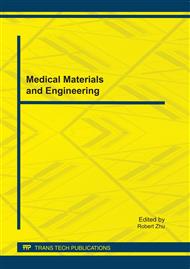p.416
p.421
p.426
p.431
p.441
p.446
p.451
p.459
p.465
Study on Protein Components and Microstructure of the Japonica Restorer Line M119 with High Protein Content
Abstract:
A japonica restorer line (named m119) with extremely high protein content was bred successfully, whose protein content (wet base) reached 13.30%±0.19% in brown rice. SDS-PAGE analysis showed that the proportion of glutelin to total protein content increased to 71.77% in m119 compared with CK. The fracture of m119 grain was rough compared with CK, which might bring about negative influence to cooking and eating quality. However, there was no significant difference of endosperm cell in size, shape and distribution compared with CK. The increase of protein content in brown rice was neither proportion nor synchronization; The axis of japonica rice grain was nearly at the center and close to the ventral part of the grain fracture observed by confocal laser scanning microscopy, which was associated with the distribution of vascular bundles transporting nutrition to the grain. The proportion of smooth to rough surface in soaked grain fracture had certain correlation with protein content and cooking and eating quality.
Info:
Periodical:
Pages:
441-445
Citation:
Online since:
November 2011
Authors:
Price:
Сopyright:
© 2012 Trans Tech Publications Ltd. All Rights Reserved
Share:
Citation:


